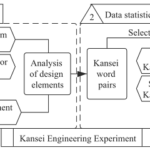Innovation management has become a necessity for companies aiming to foster innovative processes in their products or services. Individual activities such as idea identification, brainstorming, or collaboration with startups are not sufficient when initiating innovation processes. It should be considered that a company’s innovation capacity includes its ability to understand and respond to the changing conditions of its environment (ISO 56000:2020) in a systemic manner.
Traditionally, innovation activities have been centralized to specialists in research and development (R&D) or managers (Orozco et al 2015); however, innovation is not solely the responsibility of one department within the company, but rather the entire organization should be involved (Cebrián, 2014).
Innovation is not just about generating many ideas; it requires that the generated innovation strategy aligns with the strategy adopted by the company (CORFO, 2018), but all within a systemic framework that allows for effective management. As emphasized by Cebrián (2014), as important as innovation itself is the procedure for carrying it out and introducing it into our company; thus, we must consider how to manage innovation, understood as a process.
You may currently be in the midst of innovating your business model; however, to ensure this process is not chaotic, it must be systematic. In this regard, this article aims to guide you on some elements to consider when implementing an innovation management system.
Purpose of an innovation management system
Research and experience show that a systematic and holistic approach to the innovation capabilities of an organization is necessary. Developing an innovation management strategy is a requirement to ensure above-average margins in the short, medium, and long term and integrate it as a key activity in any organization (CORFO, 2018); in this sense, innovating is no longer an option, it’s a requirement!
An innovation management system provides a systemic approach to integrating innovation across all areas of the company, in order to capitalize on and create opportunities for the development of new solutions, systems, products, and services (Naden, 2019).
According to ISO:56002: 2019, “an innovation management system (IMS) guides the organization in determining its vision, strategy, policy, and innovation objectives, as well as establishing the support and processes necessary to achieve the intended results.”
Mir et al. (2016), in their research with Spanish companies, concluded that standardized innovation management systems increase innovation capability and business performance even in times of crisis.
Innovation management
According to Barros et al (2017), for companies, effective commitment to innovation efforts involves adopting management models that guide the definition of organizational processes to drive innovation opportunities throughout the organization.
Innovation management addresses the process of organizing and directing the organization’s resources (human, material, economic) to increase the creation of new knowledge and generate ideas to develop new products, processes, and services or improve existing ones (Falcone et al, 2018).
Akhmetshin et al (2017) report that the purpose of innovation management is to study methods, approaches, and technologies so that the company ensures its development and strengthens its competitive positions in the market.
What is an Innovation Management System (IMS)?
According to Falcone et al. (2018), the innovation management system comprises the set of innovation tools, the different phases of the innovation process, the definition of the organizational structure, the provision of resources for innovation, the definition of innovation policy and objectives, and the methods for evaluating and monitoring the system itself.
On the other hand, Inngage Consulting AB (2020) defines an innovation management system as a guiding work structure for all types of companies wishing to strengthen their innovation capabilities.
The innovation management system is the process of managing new ideas, from ideation to taking action and making it a reality (Richards, 2021). Likewise, it is important to link the management system with an innovation strategy, and the success of the IMS requires top-down leadership support (Hyland and Karlsson, 2021).
In summary, the Innovation Management System revolves around the systematic process of generating, implementing, and managing innovative ideas within an organization. It encompasses a range of activities, from idea generation and evaluation to resource allocation and implementation, all aimed at fostering a culture of innovation and driving organizational growth.
Currently, there are a series of standards that serve as guidance for the implementation of an innovation management system. The most well-known is the ISO 56000 standard.

Benefits of Implementing an IMS
Designing and implementing an innovation management system is a promising path to accelerate innovation efforts and develop innovation capabilities (Kihlander et al., 2024) within organizations. ISO:56002:2019 standard outlines the following benefits of implementing an innovation management system:
- Increased capacity to manage uncertainty;
- Enhanced growth, revenue, profitability, and competitiveness;
- Reduced costs and waste, and increased resource productivity and efficiency;
- Improved sustainability and resilience;
- Higher satisfaction among users, customers, citizens, and other stakeholders;
- Sustained renewal of the offerings portfolio;
- Engaged and empowered organizational personnel;
- Improved ability to attract partners, collaborators, and funding;
- Enhanced reputation and valuation of the organization; and,
- Easier compliance with regulations and other relevant requirements.
Key Elements of Implementing an Innovation Management System
The systems approach to innovation management recognizes that there are several interrelated and interacting factors within a company to ensure the success of innovation.
The ISO 56002:2019 standard covers seven key elements:
Environment
Organizations should monitor external and internal issues, such as user preferences, technological developments, and internal capabilities, to identify opportunities and challenges that may trigger innovation activities.
Leadership
Based on knowledge of the environment, senior management must demonstrate leadership and commitment by establishing a vision, strategy, and innovation policy, including necessary roles and responsibilities.
Planning
Innovation objectives, organizational structures, and innovation portfolios should be established based on the direction set by senior management and identified risk opportunities.
Support
The necessary support for innovation activities should be established, including individuals with appropriate skills, financial and other resources, tools and methods, communication activities, awareness creation, and approaches for managing intellectual property.
Operations
Innovation initiatives should be established in line with strategies and objectives. Innovation processes should be configured according to the types of innovations to be achieved: identifying opportunities, creating and validating concepts, and developing and implementing solutions.
Evaluation
The performance of the Innovation Management System as a whole should be periodically evaluated to identify strengths and gaps.
Improvement
Based on evaluation, the system should be improved by addressing the most critical gaps regarding understanding the context, leadership, planning, support, and operations.
Principles of innovation management
ISO 56002:2019 has been developed based on the following principles of innovation management:
Value realization
Value, whether financial or non-financial, is obtained from the deployment, adoption, and impact of change in solutions or new solutions for stakeholders.
The purpose of innovation management is to obtain value. Value is achieved through the process of identifying, understanding, and meeting the needs of stakeholders.
Future-focused leaders
Leaders at all levels, driven by curiosity and courage, challenge the status quo by building an inspiring vision and purpose and continuously engaging people to achieve those goals.
Conscious efforts to challenge the status quo allow the organization to balance current focus and short-term performance with attention to innovation opportunities to anticipate and create the future.
Leaders throughout the organization inspire and engage employees and other stakeholders to innovate.
Strategic direction
The direction of innovation activities is based on aligned and shared objectives and relevant ambition level, supported by necessary people and other resources.
Commonly shared and understood innovation objectives and strategy, which are aligned with overall objectives and strategic direction of the organization, provide the basis for allocating people and resources.
Strategic direction is used to prioritize innovation activities as well as to set the scope for monitoring and evaluating the performance and impact of innovation.
Culture
Shared values, beliefs, and behaviors that support openness to change, risk-taking, and collaboration enable the coexistence of creativity and effective execution.
Traditional management practices focus on efficient execution. For innovation management, it is also necessary to develop values, beliefs, and behaviors that support the creation and execution of new ideas.
To achieve innovation, the culture must enable the coexistence of creativity and execution behaviors.
Richards (2019) highlights that the right culture attracts and retains innovators; additionally, he points out that behavior and culture aspects that support innovation include: the best ideas win, accelerating time to market, continuous learning, and failing is part of the process.
Knowledge exploitation
A wide range of internal and external sources is used to systematically develop deep knowledge to address stated and unstated needs.
The development of innovative solutions depends on the identification of stated and unstated needs.
Identifying knowledge that can be exploited to obtain value requires a systematic approach, drawing on various knowledge sources.
Effective knowledge goes beyond the obvious and incorporates strategic foresight on future needs and conditions.
Uncertainty management
Uncertainties and risks are assessed, exploited, and then managed, learning from systematic experimentation and iterative processes, within a portfolio of opportunities.
Balancing opportunity exploitation and risk management increases the potential for value realization.
Applying a portfolio approach, which combines experimentation and exploitation, builds confidence and creates resilience to manage uncertainties.
Adaptability
Changes in the organization’s context are addressed by timely adaptation of structures, processes, competencies, and value realization models to maximize innovation capabilities.
New ideas and solutions often require changes in structures, processes, competencies, and models, and the ability to respond accordingly.
The ability to systematically anticipate, understand the need for change, and respond to changes is an essential innovation capability.
Systems approach
Innovation management is based on a systems approach with interrelated and interactive elements, and periodic assessments of system performance and improvements.
An organization’s innovation performance depends on processes that operate towards a common purpose.
Measuring the interaction between elements develops understanding of their interrelation. Managing these elements as an improvement system enhances organizational learning, effectiveness, and efficiency.
Implementation Phases of an Innovation Management System
Implementing an innovation management system can be a significant effort involving organizational and cultural change. This comprises four phases:
Prepare
Begin by evaluating the company’s current innovation management capabilities, including mapping ongoing innovation activities and other existing management systems.
Another important activity is to understand the opportunities and innovation challenges facing the organization, including new user needs, technological trends, competitive movements, and other changes in society and the environment.
Finally, decide on your innovation intent or level of ambition.
Implement
Develop an innovation strategy and policy describing the organization’s opportunity areas, the types of innovations it will focus on, the resources to be allocated, the people and teams involved, and how results will be measured and tracked.
You can start with “simple” innovation initiatives, communicate frequently, create commitment, and acknowledge achievements.
Scale and Sustain
Gain momentum by reinforcing senior management commitment, forming innovation portfolios, and measuring and communicating progress, best practices, and results throughout the organization.
Expand innovation activities by inspiring and involving more people within the organization, as well as external partners and collaborators.
Support all leaders in the organization to foster a culture that promotes innovation activities.
Evaluate and Improve
Analyze and evaluate the performance of the entire innovation management system with all its elements.
Are you leveraging the most significant innovation opportunities? Have innovation objectives been achieved? Are you gradually building an innovation culture within the organization?
Based on evaluation, prioritize gaps and improve the system by adjusting the innovation strategy, improving understanding of the context, reallocating resources, involving partners, enhancing innovation measurements, among other activities.
Designing an Innovation Management System
Kihlander et al. (2024) identified three key considerations essential to helping organizations realize their innovation ambitions:
- Understanding innovation ambitions and developing a clear vision and strategy for innovation work.
- Designing the innovation management system to support ambition and direction of innovation work.
- Establishing management structures and control mechanisms that provide sufficient energy to the innovation management system and adequately balance contradictions and tensions.
Additionally, an essential aspect of an innovation management system is fostering an innovation culture within the organization, where creativity, experimentation, and risk-taking are encouraged and celebrated. This culture of innovation enables employees at all levels to contribute ideas, collaborate across teams, and drive continuous improvement, fueling organizational growth and success.
Control and Improvement of the Innovation Management System
It is known that any innovation process is implemented through a series of stages; in this sense, it is necessary to make decisions and constantly control each stage.
The main objective of a flexible control system is to assess the organization and its innovation processes and develop and implement corrective actions (Akhmetshin et al., 2017).
Karlsson and Magnusson (2019) recommend that to evaluate innovation management performance, a set of indicators should be established at different levels and for different parts of the systems.
Evaluation can be related to the innovation performance of the organization, which is measured based on the results of innovation activities, or the innovation capabilities of the organization.
Finally, Akhmetshin et al. (2018) in their study on innovation processes and the control function in management found, among other results:
- The effectiveness of the company’s management system and innovation process is determined by the quality of management control, rapid and adequate response to market and internal changes.
- To improve the managerial control effectiveness of innovation development in a company, it is advisable to consider various representations of the innovation process, such as a set of innovation stages from concept to commercial product.
- The innovation process includes stages such as innovation concept, technical and economic-legal documentation, prototype, industrial design, and commercial product. At the same time, it is important to distinguish control stages over the implementation of the innovation project.
- It is also important to explore the innovation process based on resource movement and the motivations of its participants. The control mechanism in this case should be aimed at innovation process stages such as: innovation concept, intellectual property object, intangible assets.
- The innovation process, implemented in the company in terms of market strategy and traditional indicators of economic activity, must be constantly monitored.
Examples of Innovation Management Systems
Evonik Industries
Evonik Industries is a company specializing in chemical production. Kristiansen and Witthaut (2023) describe Evonik’s experience in improving its innovation management system in 2013, focusing on increasing the company’s strategic innovation capacity. Evonkik identified several specific and idiosyncratic areas related to experimenting with business model options, business vision, stakeholder management, and iterative learning of opportunities that were distinct from managing incremental innovation projects.
Serious Game for Learning IMS
Morel and Claire (2021) presented a new game, aligned with ISO 56002:2019 Innovation Management System, aimed at helping students from engineering schools, business schools, or innovation master’s programs acquire basic knowledge about building and evaluating innovation management systems in a playful way.
Schaeffler Group
Schaeffler is a global automotive and industrial supplier with approximately 82,800 employees and a turnover of 15.8 billion euros; Lau et al. (2023) describe practical information on the development and implementation of necessary capabilities for “innovation for business” through specific organizational measures in the innovation management system.
Police Agencies
Reis et al. (2023) examined innovation management systems in law enforcement organizations (Police); the study was based on a multi-case analysis in five police agencies from different countries and demonstrated efforts to systematize innovation management in organizations.
Conclusion
An important aspect to consider is that different types of innovation (open, incremental, radical, etc.) will require different innovation management styles. Additionally, it is important to view the innovation management system as the facilitator for creating capacity for innovation work.
In this sense, the Innovation Management System represents a powerful framework for organizations to unleash their potential, drive growth, and stay ahead in the competitive business environment today. By understanding the essence of an innovation management system, leveraging key components, and learning from real-world examples, organizations can pave the way for excellence in innovation and position themselves for future success.
References
Akhmetshin, Elvir & Vasilev, V.L. & Bakhvalov, S.I. & Prikhod’ko, A.N. & Kazakov, A.V.. (2017). Internal control in the system of innovation management in the modern business environment. International Journal of Economic Research. 14. 409-416.
Akhmetshin, V.L. Vasilev, D.S. Mironov, A.V. Yumashev, A.S. Puryaev, V.V. Lvov. 2018. Innovation Process and Control Function in Management. European Research Studies Journal. Volume XXI, Issue 1, pp. 663-674.
Barros R., M. Salerno, D. Oliveira da Silva. 2017. Models with graphical representation for innovation management: a literature review. R&D Management, Vol. 47, No 4, pp: 637-653.
Cebrián N. 2014. La innovación como un proceso. Universitat Oberta de Catalunya (UOC). 22 p.
CORFO. 2018. Gestión de la Innovación. 16 p.
Falcone G., J. Jiménez, Z. Tinajero, J. Serna. 2018. Gestión de Innovación en Negocios. Universidad Autónoma de Nuevo León (UANL). 16 p.
Hyland, J., Karlsson, M., (2021). Towards a Management System Standard for Innovation- Letter from Standardization, Journal of Innovation Management, www.open-jim.org, 9(1), XI-XIX.; DOI: https://doi.org/10.24840/2183-0606_009.001_0002
Inngage Consulting AB. 2020. Introduction to innovation management system. 13 p.
ISO 56002:2019(es). Gestión de la innovación — Sistema de gestión de la innovación — Orientación.
Karlsson, M. and Magnusson, M. (2019), The Systems Approach to Innovation Management, in Chen, J., Brem, A., Viardot, E. and Wong, P. K., The Routledge Companion to Innovation Management, Routledge.?
Kihlander, I., Magnusson, M., & Karlsson, M. (2024). Critical Factors to Consider When Designing an Innovation Management System. Research-Technology Management, 67(3), 34-43.
Kristiansen, J. N., & Witthaut, D. (2023). Evonik Industries AG: Capability Building for Strategic Innovation in the Innovation Management System. In Changing the Dynamics and Impact of Innovation Management: A Systems Approach and the ISO Standard (pp. 85-101).
Lau, A., Weiß, L., Smetana, T., Sauberschwarz, L., & Weyhersmüller, C. (2023). Innovation-to-Business: Enhancing the Innovation Management System of Schaeffler. In ISPIM Conference Proceedings (pp. 1-15). The International Society for Professional Innovation Management (ISPIM).
Mir, Moises & Casadesus, Marti & Petnji Yaya, Luc Honore. (2016). The impact of standardized innovation management systems on innovation capability and business performance: An empirical study. Journal of Engineering and Technology Management. 41. 26-44. 10.1016/j.jengtecman.2016.06.002.
Morel, L., & Claire, J. (2021). Innovation Management: A New Serious Game Aligned With ISO 56002: 2019-Innovation Management System. In DS 110: Proceedings of the 23rd International Conference on Engineering and Product Design Education (E&PDE 2021), VIA Design, VIA University in Herning, Denmark. 9th-10th September 2021.
Naden, C. 2019. Shape a new future with innovation management standards. ISO.
Orozco J., K. Ruiz, R. Corrales. 2015. Manual para la Gestión de la Innovación. Centro Internacional de Política Económica para el Desarrollo Sostenible (CINPE) – Universidad Nacional de Costa Rica (UNA). 63 p.
Reis, M. C., Barbosa, A. P. P. L., Lasmar, T. P., & Salerno, M. (2023). Understanding Innovation Management System in Law Enforcement Agencies. In Academy of Management Proceedings (Vol. 2023, No. 1, p. 17733). Briarcliff Manor, NY 10510: Academy of Management.
Richards, R. 2021. Innovation Management: The Essential Guide for 2021. MassChallenge.





